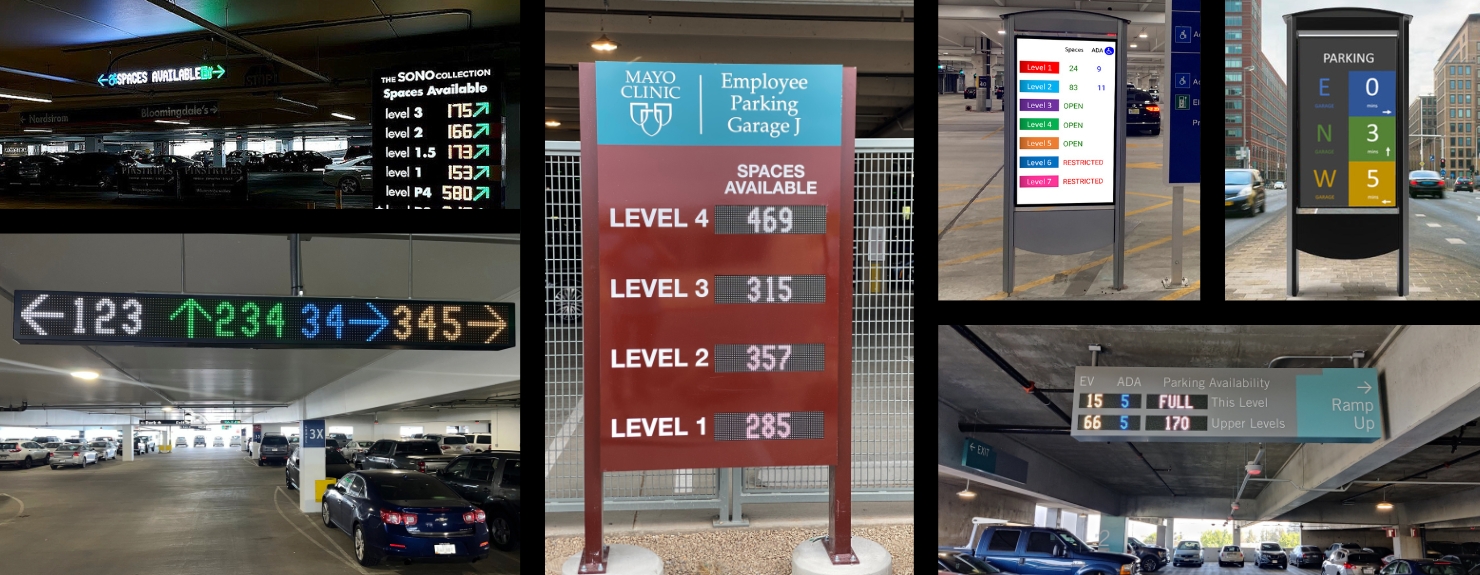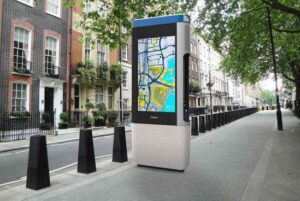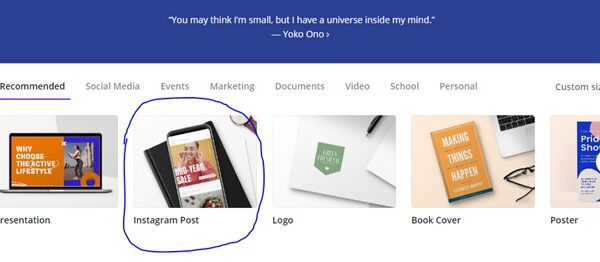Navigating the Future: How Digital Signage Displays Are Revolutionizing Wayfinding
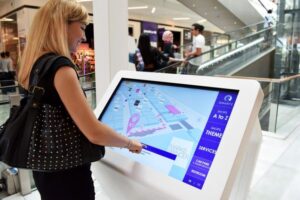
As the world becomes more digitized, businesses and organizations are constantly seeking new ways to enhance customer experiences and streamline operations. One area that has seen significant advancements in recent years is wayfinding, the process of navigating through physical spaces. With the advent of digital signage displays, wayfinding has been revolutionized, providing a more efficient and engaging way for people to find their way around. Whether it’s in a shopping mall, educational institution, healthcare facility, or transportation hub, digital signage displays can provide real-time information and interactive maps that improve the overall user experience. In this article, we’ll dive into the world of digital signage displays and explore how they are shaping the future of wayfinding. So buckle up and get ready to navigate the future with ease!
Benefits of Using Digital Signage Displays for Wayfinding
Digital signage displays are changing the way businesses and organizations approach wayfinding. Here are some of the benefits they bring:
- Improved User Experience
Digital signage displays provide a more interactive and engaging way of navigating through physical spaces. With real-time information and interactive maps, users can quickly find their way around without the need for printed maps or static signs. This enhances the overall user experience, making it easier for people to find their way around and reducing the frustration that comes with getting lost.
- Customizable and Dynamic
Digital signage displays are highly customizable and can be tailored to suit the needs of any business or organization. They can display real-time information, including current events, weather updates, and news. Digital signage displays can also be programmed to display different content at different times of the day or week, making them a dynamic and versatile solution for wayfinding.
- Cost-Effective
While the initial cost of implementing digital signage displays can be high, they are ultimately a cost-effective solution for wayfinding. Digital signage displays eliminate the need for printed maps and static signs, which need to be replaced periodically. They also require less maintenance than traditional signage, reducing ongoing costs.
Digital Signage Displays vs Traditional Wayfinding Methods
Traditional wayfinding methods, such as printed maps and static signs, have been used for decades to help people navigate through physical spaces. However, these methods have their limitations. Printed maps can quickly become outdated, and static signs can be difficult to read and understand.
In contrast, digital signage displays provide real-time information and interactive maps, making it easier for users to find their way around. They can display more detailed information than traditional signage, such as the location of specific stores or facilities within a building. Digital signage displays are also more engaging and customizable, making them a more effective solution for wayfinding.
Examples of Successful Digital Signage Wayfinding Implementations
Digital signage displays are already being used in a range of public spaces to improve wayfinding. Here are some examples of successful digital signage wayfinding implementations:
- Shopping Malls
Shopping malls are complex spaces that can be difficult to navigate, especially for first-time visitors. Digital signage displays provide an effective solution for wayfinding in shopping malls. They can display real-time information on store locations and promotions, as well as interactive maps that help users find their way around. For example, the Mall of America in Minnesota has implemented a digital wayfinding system that includes interactive maps, directories, and real-time information on parking availability.
- Educational Institutions
Educational institutions, such as universities and colleges, can be large and sprawling, making it easy for students and visitors to get lost. Digital signage displays provide an effective solution for wayfinding in educational institutions. They can display real-time information on class schedules and locations, as well as interactive maps that help users find their way around. For example, the University of Waterloo in Canada has implemented a digital wayfinding system that includes interactive maps, directories, and real-time information on bus schedules.
- Healthcare Facilities
Healthcare facilities can be stressful and confusing for patients and visitors. Digital signage displays provide an effective solution for wayfinding in healthcare facilities. They can display real-time information on the location of specific departments and services, as well as interactive maps that help users find their way around. For example, the Cedars-Sinai Medical Center in Los Angeles has implemented a digital wayfinding system that includes interactive maps, directories, and real-time information on wait times.
Best Practices for Designing Digital Signage Displays for Wayfinding
Designing effective digital signage displays for wayfinding requires careful consideration of a range of factors. Here are some best practices to keep in mind:
- Keep it Simple
Digital signage displays should be easy to read and understand. They should display only the most essential information and be free of clutter. Users should be able to quickly find what they’re looking for without being overwhelmed by information.
- Use High-Quality Images and Graphics
Digital signage displays should use high-quality images and graphics that are easy to read and understand. They should be visually appealing and engaging, making it more likely that users will engage with them.
- Incorporate Interactive Elements
Digital signage displays should incorporate interactive elements, such as touchscreens, that allow users to interact with the display and find the information they need quickly and easily.
Future Trends in Digital Signage Wayfinding Technology
Digital signage wayfinding technology is constantly evolving. Here are some future trends to keep an eye on:
- Artificial Intelligence
Artificial intelligence (AI) is already being used in digital signage displays to provide personalized information and recommendations to users. In the future, AI is likely to become even more prevalent in digital signage displays, providing users with customized information and wayfinding directions.
- Augmented Reality
Augmented reality (AR) is already being used in some digital signage displays to provide users with a more immersive and engaging wayfinding experience. In the future, AR is likely to become even more prevalent, providing users with interactive maps and directions that are overlaid onto the physical environment.
Case Studies on the Effectiveness of Digital Signage Displays for Wayfinding
Digital signage displays have been shown to be an effective solution for wayfinding in a range of public spaces. Here are some case studies that demonstrate their effectiveness:
- Manchester Airport
Manchester Airport in the UK implemented a digital wayfinding system that included interactive maps, directories, and real-time information on flight departures and arrivals. The system was found to be highly effective, with 95% of users saying they found it easy to use.
- Rutgers University
Rutgers University in New Jersey implemented a digital wayfinding system that included interactive maps, directories, and real-time information on class schedules and locations. The system was found to be highly effective, with 88% of users saying they found it helpful.
How to Implement Digital Signage Displays for Wayfinding in Your Business or Organization
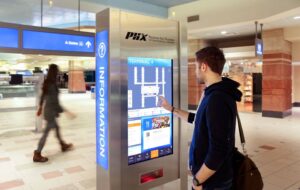 Implementing digital signage displays for wayfinding in your business or organization requires careful planning and consideration. Here are some steps to follow:
Implementing digital signage displays for wayfinding in your business or organization requires careful planning and consideration. Here are some steps to follow:
- Identify Your Needs
Before implementing digital signage displays, it’s important to identify your needs and the specific requirements of your business or organization. Consider the physical space and the information that users will need to find their way around.
- Choose the Right Display
Digital signage displays come in a range of sizes and formats. Choose a display that is appropriate for the physical space and the information that needs to be displayed.
- Develop the Content
Develop the content that will be displayed on the digital signage displays. This should include real-time information, interactive maps, and other relevant information.
Cost Considerations for Digital Signage Wayfinding Solutions
Implementing digital signage displays for wayfinding can be a significant investment. Here are some cost considerations to keep in mind:
- Hardware Costs
Digital signage displays can be expensive, especially if you require a large number of displays or high-end models. Be sure to budget for these costs accordingly.
- Software Costs
Digital signage displays require software to operate. Consider the cost of software licenses and ongoing maintenance and support.
- Installation and Maintenance Costs
Installing and maintaining digital signage displays can be costly. Be sure to budget for installation and ongoing maintenance costs.
Conclusion and the Future of Wayfinding with Digital Signage Displays
Digital signage displays and digital billboards are revolutionizing the way we find our way around public spaces. They provide real-time information and interactive maps that make it easier for users to navigate through physical spaces. As technology continues to evolve, we can expect to see even more advanced digital signage wayfinding solutions. In the meantime, businesses and organizations can benefit from implementing digital signage displays to improve the overall user experience and streamline operations.
Need help? Contact us for a Free Consultation!


